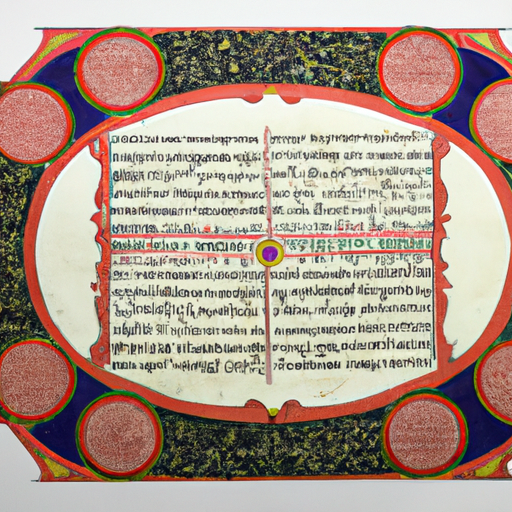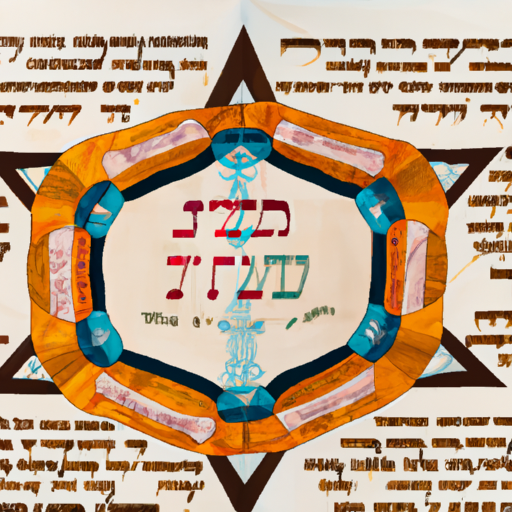This review delves into the profound significance of the Ketubah text, a cornerstone in Jewish marriage ceremonies. It seeks to illuminate the shared values expressed in the Ketubah, exploring its historical origins, symbolic content, and its role in modern Jewish weddings. The review also highlights how the Ketubah text, through its religious and socio-cultural significance, serves as a mirror to Jewish life, ethics, and the mutual obligations of a married couple.
"The Historical Journey: How has the Ketubah evolved?"
The Ketubah, a Jewish marriage contract, has a rich historical journey that spans centuries. Evolving from ancient times to the present, the Ketubah has adapted to reflect the changing needs and values of Jewish communities worldwide.
- 1. Cultural Influences:
One significant factor that influenced the evolution of the Ketubah was the cultural context in which Jewish communities existed. Throughout history, Jewish populations lived in various regions, including the Middle East, Europe, and North Africa. Each of these regions had its unique customs and legal traditions, which influenced the content and format of the Ketubah. As Jewish communities migrated and interacted with different cultures, the Ketubah absorbed elements from these diverse traditions, incorporating them into its text and design. - 2. Legal Framework:
Another driving force behind the evolution of the Ketubah was the legal framework within which Jewish marriages were conducted. In ancient times, the Ketubah primarily served as a financial agreement, outlining the husband's financial obligations to his wife. However, as legal systems developed and Jewish communities faced changing legal circumstances, the Ketubah expanded to include various provisions related to inheritance, divorce, and other legal matters. The Ketubah transformed from a mere contract into a comprehensive document that protected the rights and interests of both spouses. - 3. Religious Influences:
The Ketubah's evolution was also influenced by religious factors. Jewish religious texts, such as the Torah and Talmud, provided guidance on the content and requirements of the Ketubah. Over time, rabbinic interpretations of these texts shaped the language and structure of the Ketubah. Additionally, religious beliefs and values surrounding marriage, such as the importance of commitment and mutual respect, found their expression in the evolving Ketubah text.

An antique ketubah showcasing intricate designs and Hebrew calligraphy
Is the Ketubah simply a Marriage Contract?
The Ketubah is often misunderstood as merely a marriage contract, but it is much more than that. While it does contain legal and financial provisions, its significance extends far beyond the practical aspects of a marriage. The Ketubah is a sacred document that symbolizes the covenant between two individuals and their commitment to building a life together. It encapsulates the values, aspirations, and obligations that the couple shares as they embark on their journey of marriage.
The Ketubah acts as a tangible representation of the couple's mutual promises and responsibilities towards each other. It serves as a reminder of the love, respect, and support they have pledged to uphold throughout their marriage. It goes beyond legal obligations by encompassing emotional and spiritual dimensions, elevating the significance of the marriage beyond a mere contractual agreement.
Moreover, the Ketubah serves as a testament to the community witnessing the marriage. It is not only a personal commitment between the couple but also an affirmation of their connection to their families, friends, and the broader Jewish community. By signing the Ketubah, the couple invites others to bear witness to their union, creating a sense of communal support and involvement.
The Ketubah also holds an artistic and aesthetic value. It is often beautifully designed and decorated, reflecting the couple's unique style and taste. The artistic elements of the Ketubah add an additional layer of symbolism and beauty to the document, enhancing its significance as a cherished keepsake for the couple.
"The Ketubah: An Artistic Manifestation of Love and Commitment"
The Ketubah, beyond being a legal document, is also an artistic manifestation of love and commitment. Its design and aesthetics are carefully chosen to reflect the unique bond between the couple and the values they hold dear. This artistic aspect of the Ketubah adds an extra layer of meaning and beauty to the document, making it a cherished symbol of their union.
- 1. Creative Expression:
The Ketubah allows couples to express their creativity and individuality through its design. From intricate calligraphy to vibrant illustrations, every detail of the Ketubah can be personalized to reflect the couple's unique style and tastes. Whether it's incorporating elements from nature, symbols of faith, or meaningful quotes, the artistic choices made in the Ketubah serve as a reflection of the couple's love story. - 2. Symbolism and Imagery:
The artistry of the Ketubah often incorporates meaningful symbolism and imagery. This can include traditional Jewish symbols such as the Tree of Life, doves, or the Seven Blessings. These symbols carry deep significance, representing love, unity, and blessings for the couple's future together. The imagery chosen can also tell a story, depicting scenes from nature, landscapes, or shared experiences that hold special meaning for the couple. - 3. Emotional Impact:
The artistic design of the Ketubah creates an emotional impact, both for the couple and those who witness their union. The beauty and creativity of the Ketubah serve as a reminder of the love and commitment the couple has for each other. It becomes a visual representation of their journey together, evoking feelings of joy, excitement, and anticipation. The artistic elements of the Ketubah can also inspire and uplift the spirits of those who observe it, reminding them of the power of love and the beauty of relationships.

An artistically designed modern Ketubah adorned with vibrant colors and symbols
How does the Modern Interpretation of the Ketubah reflect Jewish Life and Values?
The modern interpretation of the Ketubah reflects Jewish life and values in several ways, highlighting the evolving nature of Jewish traditions and the importance of equality, inclusivity, and mutual respect within a marriage.
- 1. Gender Equality:
In the modern interpretation of the Ketubah, there is a growing emphasis on gender equality. Traditionally, the Ketubah was written from the perspective of the groom, emphasizing his rights and responsibilities. However, in today's society, many couples choose to have a gender-neutral Ketubah that reflects the equal partnership and shared responsibilities within their marriage. This shift in perspective reflects the Jewish value of equality and the recognition of both partners' roles and contributions. - 2. Inclusivity and Diversity:
The modern Ketubah also reflects the value of inclusivity and diversity within the Jewish community. Couples from various cultural backgrounds and sexual orientations are now incorporating their unique traditions and customs into the Ketubah. This allows for a more inclusive and representative expression of Jewish life, celebrating the diversity within the community and embracing the idea that love knows no boundaries. - 3. Personalized Commitments:
Another aspect of the modern interpretation of the Ketubah is the inclusion of personalized commitments and values. Couples now have the opportunity to include their own vows, promises, and aspirations for their marriage within the Ketubah. This personalized touch reflects the value of individual expression and the importance of each couple's unique journey. It also serves as a reminder that Jewish life and values are not static but evolve and adapt to the changing needs and desires of each generation.
The Ketubah text, an integral part of Jewish matrimonial ceremonies, encapsulates shared values and mutual responsibilities. It is not merely a contract, but a profound testament of faith, love, and commitment. Its significance transcends religious boundaries, offering insights into Jewish life, culture, and ethics. The Ketubah text thus stands as a timeless symbol of Jewish marital life and a beacon of shared values.